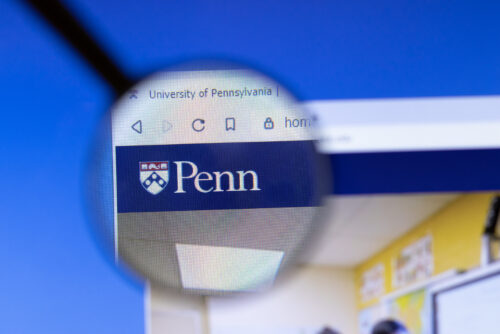A recent Wise Giving Alliance report is both too broad and not broad enough to give guidance on how to inspire donor confidence.
What engenders a donor’s trust? The Wise Giving Alliance set out to answer this question in its recently published Donor Trust Report. The headline: Religious organizations have ceded the title of most trusted charitable sectors to veterans organizations and nonprofit hospitals. (The full report can be found here; a summary can be found here.)
Alas, the report doesn’t effectively answer this question and thus is close to useless as a resource for anyone who actually serves with a nonprofit organization.
Why? Well, because what the Wise Giving Alliance has really surveyed here is not trust but affinity. This conflation becomes clear when you parse the data by generation: “Older respondents were more likely to trust religious institutions and veterans groups. Younger survey participants were more likely to trust international aid groups and civil-rights and community-action groups.” This divide tracks closely with what we know about the differing cultural views of these groups. Affinity is downstream of such attitudes, and trust downstream of both. If someone despises organized religion, they aren’t going to “trust” religious institutions, and this information is of little consequence to me as someone who raises support for one.
Advancing the mission of a nonprofit is not like winning an election: Your goal is not to earn 51% support. Rather, it is to create as many passionate fans as possible from your universe of potential supporters—those predisposed to some level of affinity with you. Twenty-six percent of respondents trust religious organizations the most; even of that 26%, my potential universe is orders of magnitude smaller. This percentage declining from, say, 26.4% to 26.1% has no discernible impact on our mission or my work.
In short, the survey is both too broad and not broad enough.
What would be useful—this is where the report is too broad—is research showing what engenders trust within that 26% and/or what precipitated the change of heart for the other 0.3%. (The study would also survey respondents who listed other sectors as being worthy of the highest trust.) Specifically, does trust in a nonprofit sector correlate in any way with trust in specific nonprofits within that sector?
Here, the best we receive is a paraphrase from the Lilly School of Philanthropy’s associate dean for research and international programs: “Donors’ willingness to trust charities can often be damaged by scandal, often unfairly, Osili says. In the for-profit world, scandals generally affect the company that transgressed . . . But high-profile nonprofit scandals often tarnish groups that have nothing to do with the bad behavior.” Is this just speculation, or does data back this up? Again, sector-specific data could help here. Of the 0.3%, were more donors turned off by bad experiences with individual religious institutions or news stories about religious institutions out in the world? Digging deeper: If the former, was it an institution with which the donor was engaged (and/or supporting)?
What would also be useful—this is where the report is not broad enough—is asking whether donors actually need to trust individual nonprofits before lending support. Even more useful to ask: Does someone who is not already a donor need to trust the nonprofit sector to become one? On this count, the report cops to its presuppositions from page one: “BBB’s Give.org believes greater trust in charities translates to higher public engagement and confidence in giving . . . While donor beliefs are not always sound measures of fact or even perfect predictors of future behavior, understanding donor attitudes toward the charitable sector can help identify opportunities to strengthen the bond between charities and donors.” Translation: We can’t supply evidence that these findings matter, but our hunch is that they do.
In his famous 1934 paper “Attitudes vs. Actions,” Stanford sociologist Richard LaPiere exposes the inadequacy of the so-called “attitudinal questionnaire”—the belief that you can reach sound conclusions about social attitudes from a set of verbal responses to symbolic situations. In asking whether one would “get up to give an Armenian woman your seat in a street car,” one is not confronted with “an Armenian woman of flesh and blood, who might be tall or squat, fat or thin, old or young, well or poorly dressed—who might, in fact, be a goddess or just another old and dirty hag. (The 1930s were a different time!)
Nonprofits, too, come in all shapes, sizes, and degrees of praiseworthiness. Donor trust is self-evidently important, but this report sheds little light on why or how it is earned. Perhaps we should spend more time with nonprofits—and donors!—in the flesh and less with their symbolic counterparts in attitudinal questionnaires.






